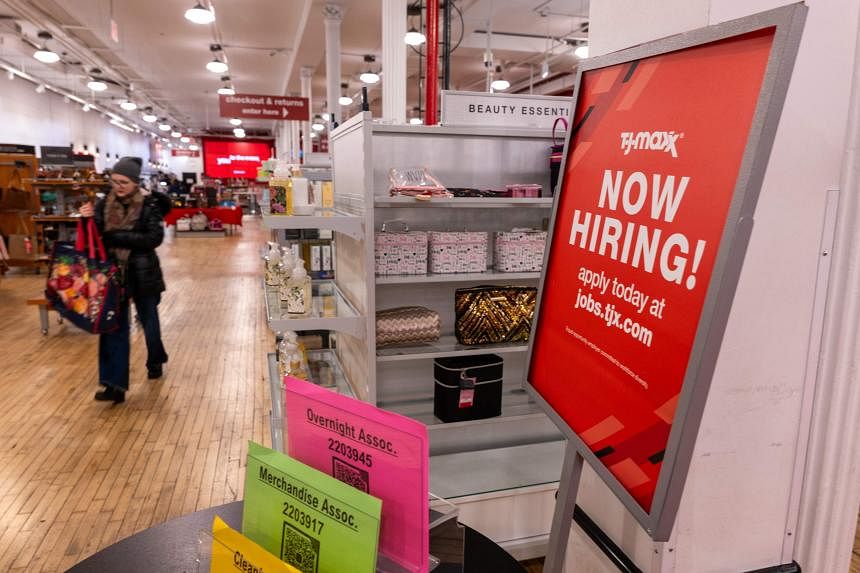WASHINGTON - US employers hired far more workers than expected in March while raising wages, suggesting the economy ended the first quarter on solid ground and potentially delaying anticipated interest rate cuts from the Federal Reserve in 2024.
Non-farm payrolls increased by 303,000 jobs in March, the Labour Department’s Bureau of Labour Statistics (BLS) said in its closely watched employment report on April 5. Data for February was revised slightly lower to show 270,000 jobs added instead of 275,000 as previously reported.
Economists polled by Reuters had forecast 200,000 jobs, with estimates ranging from 150,000 to 250,000.
The economy is outshining its global peers, despite 525 basis points’ worth of rate hikes from the US central bank since March 2022 to quell inflation.
Economists say most businesses locked in lower borrowing costs prior to the Fed’s tightening cycle, providing some insulation from higher rates and allowing them to keep their workers.
Household balance sheets are mostly healthy, helping to support consumer spending. The labour market has also benefited from a rise in immigration over the past year. Easing financial conditions are boosting hiring in interest rate-sensitive industries like construction, which should provide a base for job growth even as payroll gains are expected to slow.
The National Federation of Independent Business’ measure of small businesses planning to add jobs over the next three months fell in March to the lowest level since May 2020. It is seen as a good predictor of payroll gains.
Employment in some sectors such as healthcare, leisure and hospitality as well as state and local government remain below pre-pandemic trends.
Average hourly earnings rose 0.3 per cent in March after gaining 0.2 per cent in the prior month as some weather-related distortions faded. The annual increase in wages slowed to a still high 4.1 per cent in March from 4.3 per cent in February. Wage growth in a 3 per cent to 3.5 per cent range is seen as consistent with the Fed’s 2 per cent inflation target.
Inflation by most measures is running above target.
Financial markets expect the Fed will start easing rates in June. Fed chairman Jerome Powell, however, reiterated on April 3 that the central bank was in no rush to cut after leaving its policy rate unchanged in the range of 5.25 per cent to 5.5 per cent in March.
The unemployment rate fell to 3.8 per cent in March from 3.9 per cent in February. It has remained below 4 per cent for 26 straight months, the longest such stretch since the late 1960s. The strength in payrolls has not been replicated in the smaller and volatile household survey, from which the jobless rate is derived.
Economists attributed the divergence between the two surveys to an increase in labour supply through immigration that is not yet being captured in the household survey. The Congressional Budget Office (CBO) recently upgraded its immigration estimate for 2023 to 3.3 million from one million. The BLS uses census population estimates and will likely update the population flows in its annual benchmark revision in 2025.
Researchers at the Brookings Institution in Washington estimated that the new CBO projections suggested that the labour market in 2023 could accommodate employment growth of 160,000 to 230,000, compared with previous projections of 60,000 to 130,000, without adding pressure to wages and price inflation.
Economists said this could allow the Fed to let the economy run a little bit stronger before cutting rates. REUTERS

